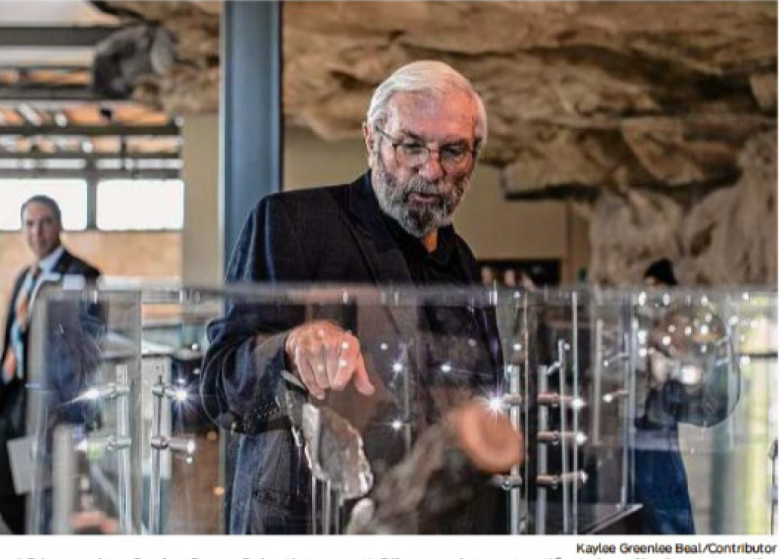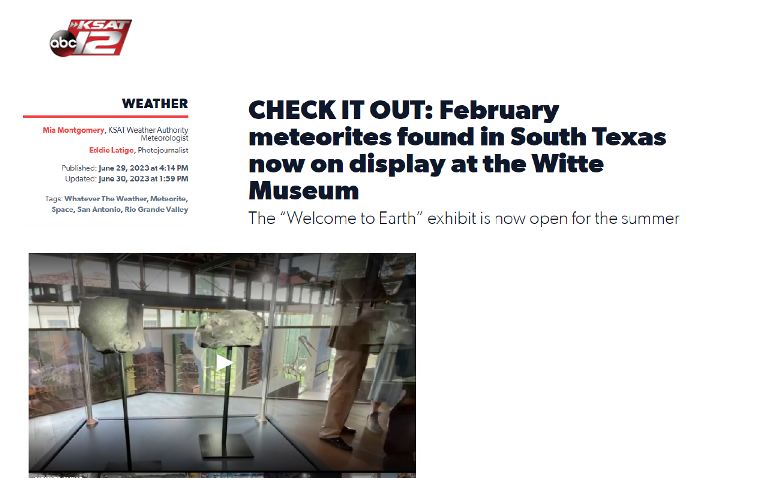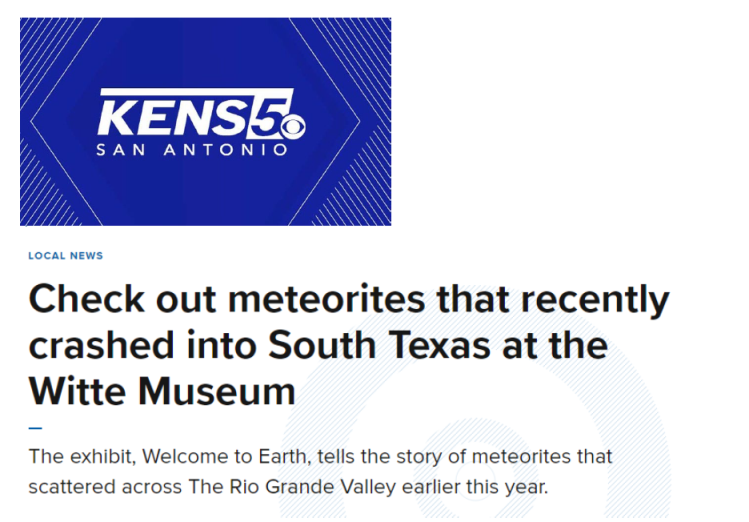Meteorites Recovered On Display through the end of October at the Witte Museum


It was the ultimate search for a needle in a haystack.
On Feb. 15, a 4.56-billion-year-old, 1,000-pound meteoroid that originated in the asteroid belt between the orbits of Jupiter and Mars entered the Earth’s atmosphere at 27,000 miles per hour, shattering into pieces and creating a fireball and sonic boom over the Rio Grande Valley.
Three days later, a team of meteorite hunters, space enthusiasts and NASA scientists were scouring an area of dense, South Texas brush roughly 2 miles long and a half mile wide, searching for pieces of the meteoroid that crashed near El Sauz in Starr County.
Five of the stony meteorites they recovered are on display through the end of October in the Witte Museum exhibit “Welcome to Earth.”
About 100 tons of material fall from the heavens every day; most are smaller than a pebble and streak across the skies as shooting stars. The El Sauz meteoroid was unusual because, while 90 to 95 percent of it burned up before hitting the ground, between 50 to 100 pounds of it was scattered across the South Texas landscape. The meteorites on display weigh a combined 11 to 12 pounds.
“We had one witness who heard the stones whistling through the air, making a kind of crackling sound,” said Philip C. Mani, an attorney and a meteorite hunter, who helped arrange the search party. “It’s highly unusual to get those kind of reports.”
Three days after the meteorites crashed to Earth, the group of four team members, plus the occasional volunteer, was in the field hunting. The first meteorite they found was scuffed from what Mani called “its violent impact on Earth.” Most of the rest, however, landed on relatively soft, loamy soil, so they don’t exhibit similar marks.
It was a hot and dusty undertaking. Mani estimated he walked 70 to 80 miles looking for these rocky visitors from outer space, all while wearing boots, jeans and long-sleeve shirts in 90-degree weather. He personally found two, an average of one for every 35 miles walked.

SAN ANTONIO – Back in mid-February, reports of a loud boom and fireball sightings came in near McAllen, Texas.
While some South Texas residents thought it was an explosion, NASA scientists confirmed that what was a 1,000-pound meteor broke into several fragments as it approached Earth. Most of it burned up, but some of those fragments ended up reaching the ground and were recovered by a team that set out to locate them.
Meteoroid, meteor, meteorite — what’s the difference?
continue

SAN ANTONIO — Visitors will get a chance to see meteorites that recently crashed into South Texas at a new exhibit at the Witte Museum.
The exhibit, Welcome to Earth, tells the story of meteorites that scattered across The Rio Grande Valley earlier this year and teaches visitors about their importance as building blocks of our solar system.
In February of this year, witnesses reported seeing a bright fireball over the Rio Grande Valley and police and the media started receiving reports of a sonic boom. The meteorite shattered into hundreds of pieces.
NASA scientists, meteorite hunters and space enthusiasts soon descended upon the area and began a search through South Texas brush country. continue






